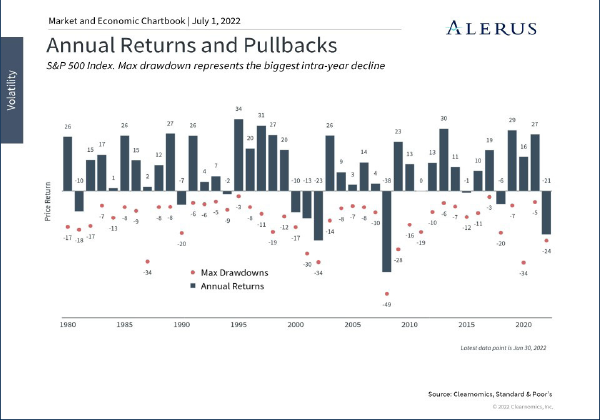Retirement Investing and Market Volatility
Key Takeaway
Market volatility is an inevitable part of investing. These bouts of volatility can be unnerving, but they are a normal feature of long-term investing. Retirement investors should expect to see market declines periodically throughout their investing careers.
It is hard not to react when the market is down, especially as the news, headlines, social media, etc. are flashing negative sentiments. While every investor is different, with a unique situation, it is important to consider these fundamental ideas:
- Resist the urge to sell based solely on recent market volatility. Selling your investments when the markets drop solidifies any losses. It is emotionally challenging, but staying the course may be healthier for your account. It is important to consider each role investment plays in your portfolio.
- Take advantage of dollar cost averaging. Automatic payroll deductions into your retirement plan simplify saving for retirement. With dollar-cost averaging, your contributions are routinely invested, regardless of current prices or market conditions. When share prices are higher, your contribution purchases fewer shares. When prices are low, you purchase more shares, putting you in a stronger position to benefit if prices rise.
- Diversification helps limit your exposure to any one type of asset. Over time, this practice can help balance risk and reward in your portfolio. Diversifying into different types of investments helps reduce your overall risk because when one type of investment falls, another may rise.
Market volatility is not uncommon. To further illustrate the nature of financial markets, below is a figure that takes a look at annual returns and pullbacks since 1980.


